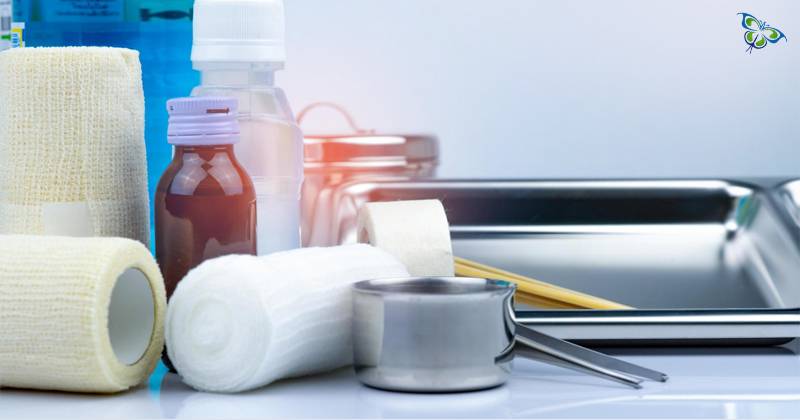
Hello
Select Address

What is an impregnated dressing?
Wound dressing plays a pivotal role in fast and effective healing and involves the use of various chemicals and medicinal ingredients for this purpose. Primarily, dressings are of two types: Impregnated or Non-Impregnated.
Impregnated gauze or a bandage is treated with select chemicals to induce the healing process. Why so? An impregnated dressing provides the patient's wound with a sterile environment and a mixture of chemical compounds to promote healing. The non-impregnated dressing is basically a dry one that plays a protective role but does not participate in healing.
Interestingly, the compounds that are used in impregnated dressings are non-adherent to the wound bed, and a secondary dressing is therefore used to improve the healing process. Impregnations are of different types according to the use and the purpose it serves. The four common types of medical dressing impregnations have been discussed later in this post.
The use of impregnated medical gauzes or bandages varies as per the requirement of the wound that is being treated. The most widely used impregnations for wound healing are:
Gauzes impregnated with iodine
Iodine is commonly used for cleaning and debridement of the wound. Since iodine is a powerful disinfectant, the common idea is to use it almost on any injury. However, according to a 2011 study, iodine is only suited for specific wounds like ulcers and low-level burns!
Impregnation with Silver
Silver is popularly known as a dressing ingredient for ages. It's known for its antibacterial properties and is applied to wounds to hinder the spread of bacteria as well as other harmful contaminants. It reduces the chances of infection and even septicemia or sepsis that could reach into the bloodstream. It might now occur to you: Why silver? According to health experts, silver is a healthier option than other chemicals as it produces lesser toxins within the body than others. The popularity of silver among all and sundry has resulted from the fact that even the low-intensity wounds like minor abrasions, for instance, while a child hurts himself, are treated at home using silver!
Gauzes padded with Methylene Blue
This is commonly termed as a methyl blue dressing. Methylene blue is a beneficial component in fighting certain difficult bacteria. For instance, this chemical can fight the vancomycin-resistant enterococcus too! They are therefore utilized in treatments of diabetic ulcers and other hard-to-heal wounds that may be caused by acute respiratory distress syndrome! The most desirable characteristic feature of a methyl blue dressing is that it is more absorbent than the others; silver, as well as foam.
Gauzes or dressings with Honey impregnations
Honey, quite unknown to many, has been traditionally used in the treatment of cuts, wounds, abrasions, and other injuries. Although in use for several thousand years, yet, the scientific virtues of honey have been decrypted in recent decades. Researchers found that honey, quite like silver, works efficiently on wounds and has widespread use across various treatment purposes too.
A brief overview of how honey works: the acid that is present in honey aids in oxygenation and helps the wound bed turn hostile to all forms of bacteria. Remember, no matter whichever type of honey you are choosing – each has its unique antimicrobial potential.
The medical fraternity for long has been faced with the challenge of healing wounds and preventing infections. One of the shocking statistics reveals that amputees have a 50% mortality rate within five years of the operation. From this, one can well imagine how crucial is wound healing! It is essential for the prevention of infection that could prove to be fatal. Medical gauzes, especially the impregnated gauzes, have therefore been under continuous research to better the wound treatment and healing process.